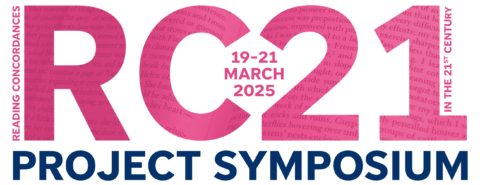#RC21 Patricia Ronan: Concordances versus manual investigation, exploiting their strengths and weaknesses
Date: 21. March 2025Time: 10:15 – 11:00Location: Kollegienhaus, Universitätsstraße 15, 91054 Erlangen
Join us for the RC21 Project Symposium, where invited speakers and project team members will present their work on methodology and applications of concordance analysis!
Patricia Ronan: »Concordances versus manual investigation, exploiting their strengths and weaknesses«
Abstract:
According to Sinclair (1991: 32), a concordance, in its simplest form, is an index for a place of a word’s occurrence in a text. Even though the not-so-simple forms of concordances and concordance use are considerably more complex, the simplicity of concordances makes them such a powerful tool. The current contribution discusses concordance use in different contexts. It focuses on the use of concordances in corpus-based language variation research and in language learning contexts. The use of concordances in language variation research is wide-spread and well-established (cf. e.g. Tribble 2010).
Obvious advantages of concordance uses are allowing word-form, wild-card and phrase searches, and added benefits of restricting large output through sort criteria, which provides researchers with easy access to large data sets. Evaluation of such output, especially when strongly restricted, not only allows variety comparison, but can also be used for teaching purposes. As a result, using concordances is also advocated in classroom language teaching (e.g. Harrington 2023, Selivan 2023): using concordances provides teachers and learners with easy access to large-scale, real-life language data and allows students to learn by doing. Here, too, sufficient restriction of search criteria is necessary, however, to prevent being drowned in data.
A different type of disadvantage of concordance use, next to obtaining too much data for analysis and the possible necessity of strict search criteria, is that the focus on search terms and search windows typically offers little insight into the wider corpus context. Both structures not covered by the search terms and further linguistic and contextual features in the corpus data cannot be observed.
After outlining strengths and weaknesses of concordance and other approaches, this contribution will make suggestions how respective weaknesses can be alleviated or overcome.
References:
Harrington, K. 2023. Culture in English Language Teaching: Let the Language Do the Talking. In: Harrington, K. & P. Ronan (eds). Demystifying Corpus Linguistics for English Language Teaching. London: Palgrave Macmillan. 163 – 184.
Selivan, L. 2023. Corpus Linguistics and Vocabulary Teaching. In: Harrington, K. & P. Ronan (eds). Demystifying Corpus Linguistics for English Language Teaching. London: Palgrave Macmillan. 139 – 162.
Sinclair, J. M. 1991. Corpus, Concordance and Collocation. Oxford: Oxford University Press.
Tribble, C. 2010. What are concordances and how are they used. In: O’Keeffe, A. & M. McCarthy (eds.). The Routledge Handbook of Corpus Linguistics. London: Routledge.
Event Details
Kollegienhaus, Universitätsstraße 15, 91054 Erlangen
